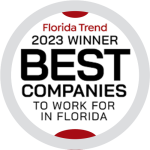Introduction
It was a pleasure interviewing Patti Alderman, Administrative Service Manager for York Poquoson Social Services, and Robin DeLorge to learn how they’re using Laserfiche to better serve those in need in their community.
“It’s also great that we can tailor Laserfiche to our own needs. It is flexible to be precisely how we need it to be.”
About York Poquoson Social Services (York County, VA)
York County, Virginia, has a population of approximately 67,000, and Poquoson’s population is around 12,000. The York/Poquoson Department of Social Services (DSS) is state–supervised, locally administered, and serves on the front line of intervention and assessment. They provide a broad array of human service programs for county residents who have social, health, educational, emotional, and financial needs.
Some of the programs within their purview include but are not limited to The Supplemental Nutrition Assistance Program (SNAP), Medicaid, Temporary Assistance for Needy Families (TANF), heating/cooling assistance, Auxiliary Grants (AG) for Assisted Living and Adult Foster Care, Adoption Subsidy programs, Foster Care, Child and Adult Protective Services, Companion Services for adults, as well as Family Preservation Programs.
With a staff of 64 and on average 5,400 monthly cases, the York/Poquoson DSS’s mission is to protect vulnerable people, assist with their basic needs, and promote self-sufficiency.
The Problem
When you purchased Laserfiche what problems were you looking to solve?
York County has had Laserfiche for about 20 years. Ten years ago, I wanted to move our hard files to the system, but we weren’t ready yet. However, over time, we ran out of filing space. Around the same time, the state went to a document imaging system (DMIS/VaCMS), but it required us to keep a physical copy of each document. It was then that we decided to commit to implementing Laserfiche finally. It was an easy decision for us to make and the right time to begin converting documents to the repository.
What was the process of distributing and sharing the information prior to Laserfiche?
With 4,000 files that needed conversion, it took about two years to convert all open cases. We hired part-time staff to do nothing but scan open records.
We were able to decrease our file cabinets from 39 to 19 and saved about $20,000.
Since we couldn’t add more filing cabinets for storage, the transition to Laserfiche was a game-changer. The building couldn’t handle the weight. Without Laserfiche, the records would have found a home in off-site storage, which would have created a confidentiality issue and increased the amount of time it took to gain access.
Can you approximate the amount of time and cost that it took to share case files before Laserfiche document storage?
Since the master file area is locked, someone would have to go back there to process cases. Then they created an out folder, brought it to the caseworker’s office, and then returned it to the master file area. It limited who could access the files. A tracking system did not exist.
Now, we cannot lose a file! We can search for it upside down, and inside out. Before, it could take up to three days, and now we can find data in under five minutes. We are excited to gain additional staff resources in areas where they were only focused on previous file storage.
The Solution
Which departments currently use Laserfiche?
All benefit program areas currently use Laserfiche. The document repository’s purpose is to store closed service records, except for foster care, which we will add soon.
We also have a human resource component that holds all personnel files and related documents. This saves me so much time. I can also access training certificates quickly, click on the file and email in an instant!
Are additional types of documents accessible through Laserfiche?
In addition to human resources, Laserfiche houses items like sexual abuse investigations, recorded audio files saved from meetings with clients, as well as reports.
Recently, our agency received an audit. The files were so easy to access in Laserfiche. We only had to print the page that the auditor required. No more pulling folders in carts to the auditor’s space! The process was so much easier for the staff and auditors this time around.
Which type of business process automation occurs with Laserfiche?
The Human Resource Department simplified their onboarding process. People apply for jobs through the state’s system, and their applications import directly to Laserfiche.
When new cases open, we put everything directly into Laserfiche. There’s very little paper used now. There are snapshot workflows in place – so we never have to print a thing! Also, appropriate case information is automatically uploaded each night for benefit cases (SNAP, Medicaid, TANF).
Tell us about the resources saved by implementing the new electronic processes?
Paper, of course, and the ordering of more physical file storage units, including specific file folders that were part of the filing system. The elimination of filing records after closure in the closed file area allows workers more time to process cases more efficiently and faster. We saved approximately 400 square feet in the office too.
What is the most positive change you have seen since implementation?
Accountability for the documents that are needed to process cases. Space! Oh, the space! The efficiency of keeping documents together in one place is wonderful. The chances of losing a record are almost impossible now.
Could you share with us a story of when Laserfiche was valuable for your organization or when Laserfiche came to the rescue?
When making the switch, you’re going to get a lot of resistance. People want to feel paper and work from a file. It’s normal to experience this aversion to change.
However, one of the benefits is that Laserfiche can always track where a document is – even if it’s filed in the wrong location. Once, we lost two child protective service cases. They couldn’t be found anywhere, and we swore they were scanned into LF. We found the cases in the closed files. There’s always a log to show every change within the system. If someone says Laserfiche lost or misplaced the record, it’s straightforward to track where the file is located.
Is there any additional information you would like to provide on the way you use Laserfiche or how it has improved your work processes?
If the staff need to find a person, they’re able to find them by their name or social security number. The simplicity of the search and retrieval process is impressive! You realize how much time you save by not having to have paper files in your office that can be lost, misfiled, or that are just unnecessary.
Do you have integrations or plug-ins that you use with Laserfiche?
Human resource processes are all done through Laserfiche. DMIS uploads every night from Laserfiche, and Peer Place readily accepts the PDFs from Laserfiche.
What are the most significant benefits you received as a result of implementing Laserfiche?
The most significant benefit was freeing up storage space and our time. It’s also great that we can tailor Laserfiche to our own needs. It is flexible to be precisely how we need it to be.
Even if it’s an estimate, can you quantify how much time and money has been saved by using Laserfiche?
Time has been the most substantial savings at this point. The Commonwealth of Virginia moved to a document imaging system (DMIS) over three years ago. The Laserfiche system is a great companion to the DMIS system by allowing staff to input data one-time. It eliminates the duplication of scanning and filing into two, sometimes three different places. Although there is a learning curve to change behaviors, the result is much more efficient.
From a monetary perspective, our agency saved two positions, directly benefiting our budget and admin support.
What lessons and best practices have you learned that you could share to empower others in the future when adopting Laserfiche as their content services solution?
One thing that’s a must – senior leadership must have the buy-in. The staff will follow the leadership’s direction. The executive and management teams need to be positive about the impact it’s going to make in everyday business processes. It always takes time, as embracing change can be difficult for long-term staff. Be patient and understanding about what workers are feeling. Ensure that staff doing the work play a role in developing automated workflows.
The Future
How will you handle your back-file scanning and ADA compliance laws for documents in the future?
There are 18 file cabinets available for shredding. We’ve almost reached that timeframe. By the end of 2020, 90% of the existing closed files will no longer exist.
What is the five-year plan for improvements that you believe Laserfiche will make for your organization and those that you serve?
We will gain more office space as we grow with Laserfiche. The solution allows clients to scan things to their caseworkers so they can snapshot (the process of electronically capturing records for storage) records into Laserfiche. It creates less traffic in the office as well.






